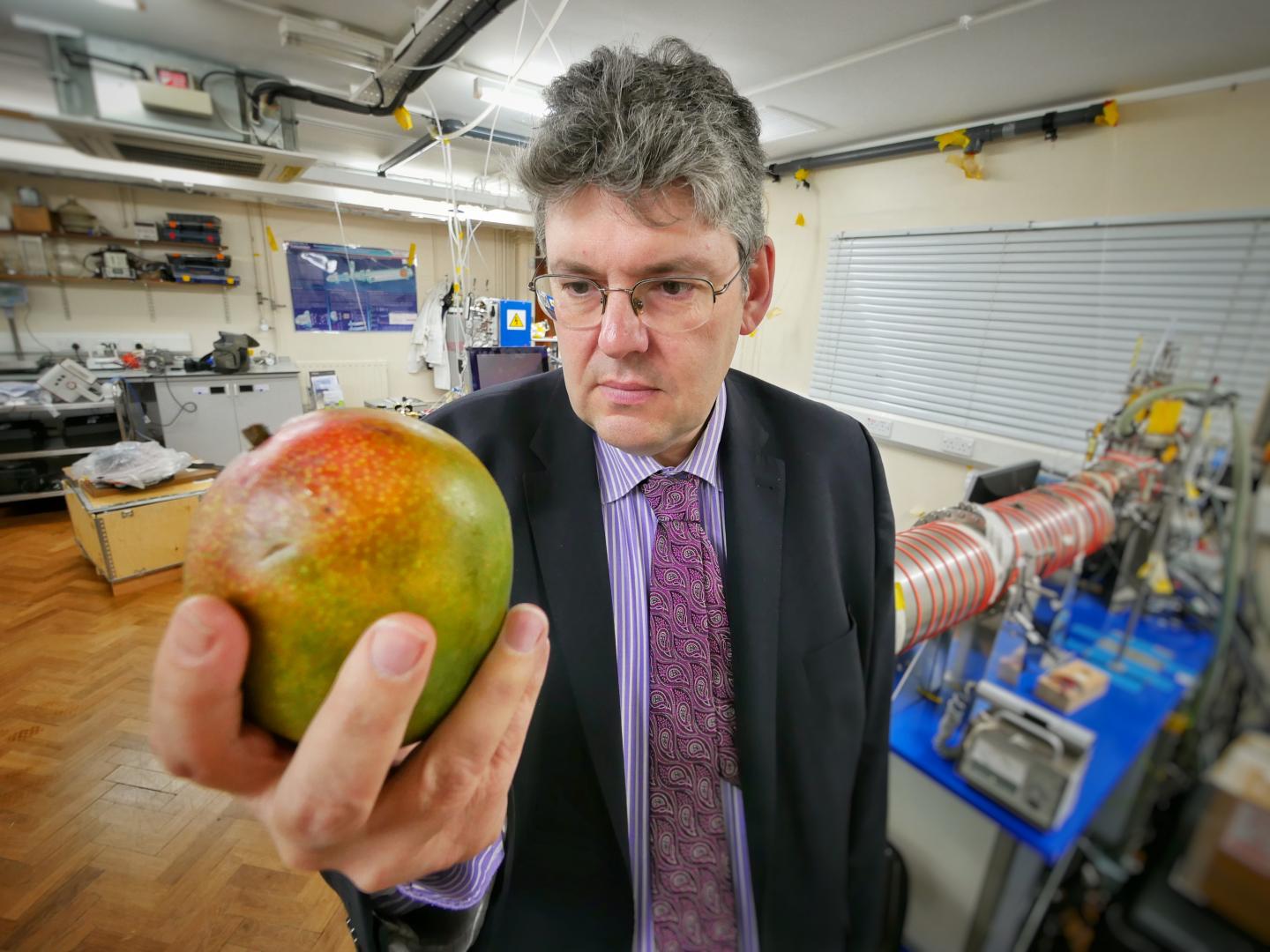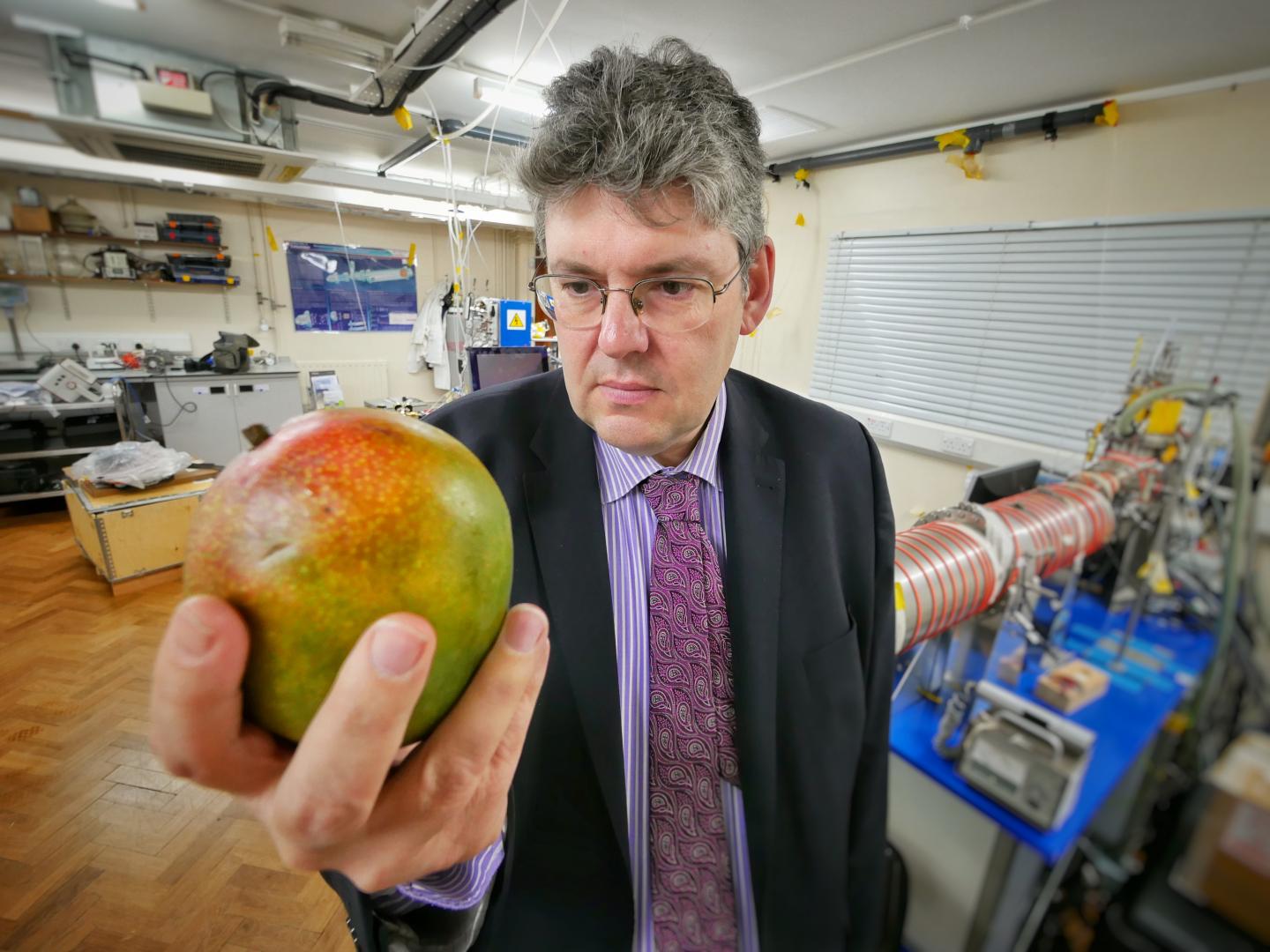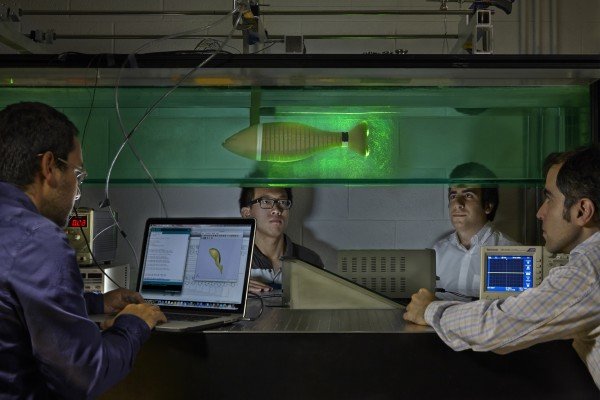
Scientists from the University of Leicester have, for the first time, identified a way to ‘sniff’ the ripeness of mangoes.
They have identified the unique chemical signature of ripening for mangoes and published their research in the academic journal Metabolomics.
Lead researcher Professor Paul Monks, of the Department of Chemistry at the University of Leicester, said: “Mangoes are one of the most important and popular tropical fruits with India producing approximately 40% of the world’s supply. The UK imports in excess of 60,000 tonnes of mangoes into the UK and the market is worth more than £70 million.
“It is really important for people to be able to tell how ripe fruit is without having to taste it. This important for fruit producers and supermarkets. Our new published research, from the University of Leicester, has shown that is possible to ‘sniff’ the ripeness of mangoes.
“We used a novel fast-sensitive “electronic-nose” for sniffing volatiles compounds from the ripening fruit. Popular supermarket species of mango were used. In particular, the work showed an increase in ester compounds – the smell of pear drops – was a particular marker of over ripe fruit.”
Professor Monks said the work has, for the first time, followed in real-time and detail the chemical signatures of ripening for mangoes.
He added: “There are some real potential applications of this research for making devices to be able assess ripeness non-destructively. The information gained from the work could be used to develop to small, hand-held electronic noses that could be deployed to assess fruit maturity prior to picking and thus determine the optimum point to harvest mature green mangoes.
“This work has great potential for small devices to detect fruit ripeness and could be expanded to a range of different fruits.
“In terms of where we go from here – well we are looking for commercial partners who may be interested in taking these sort of ideas forward.”
Professor Monks worked with his Leicester-based colleagues Dr Iain White and Dr Robert Blake. He collaborated with Professor Andy Taylor of the local SME Flavometrix.
###
Media Contact
Paul S. Monks
[email protected]
01-162-522-141
@UoLNewsCentre
http://www.leicester.ac.uk
The post University of Leicester scientists identify way to ‘sniff’ ripeness of fruit appeared first on Scienmag.





